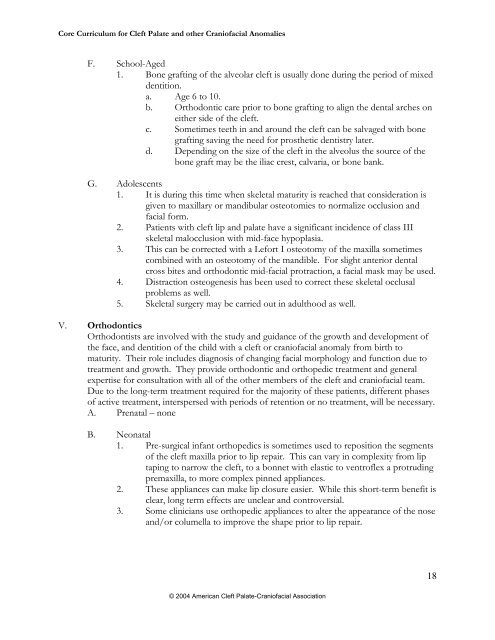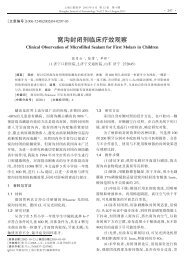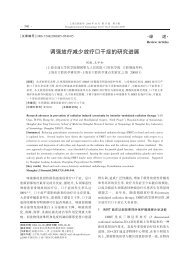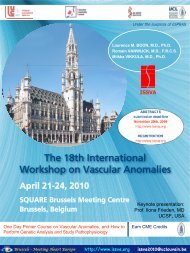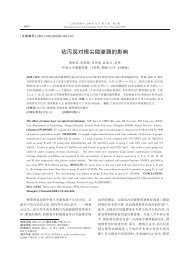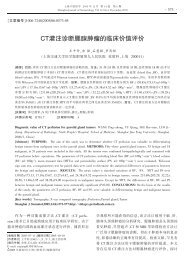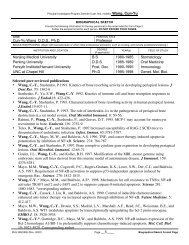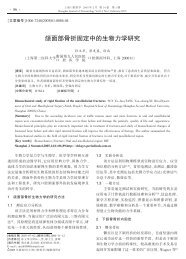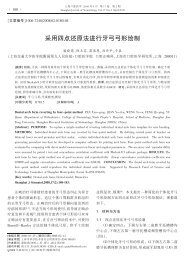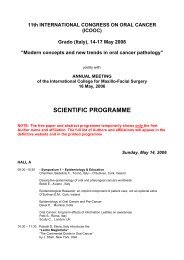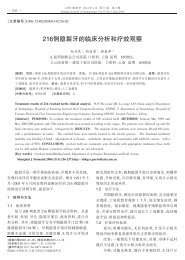core curriculum cleft lip/palate craniofacial anomalies
core curriculum cleft lip/palate craniofacial anomalies
core curriculum cleft lip/palate craniofacial anomalies
Create successful ePaper yourself
Turn your PDF publications into a flip-book with our unique Google optimized e-Paper software.
Core Curriculum for Cleft Palate and other Craniofacial Anomalies<br />
F. School-Aged<br />
1. Bone grafting of the alveolar <strong>cleft</strong> is usually done during the period of mixed<br />
dentition.<br />
a. Age 6 to 10.<br />
b. Orthodontic care prior to bone grafting to align the dental arches on<br />
either side of the <strong>cleft</strong>.<br />
c. Sometimes teeth in and around the <strong>cleft</strong> can be salvaged with bone<br />
grafting saving the need for prosthetic dentistry later.<br />
d. Depending on the size of the <strong>cleft</strong> in the alveolus the source of the<br />
bone graft may be the iliac crest, calvaria, or bone bank.<br />
G. Adolescents<br />
1. It is during this time when skeletal maturity is reached that consideration is<br />
given to maxillary or mandibular osteotomies to normalize occlusion and<br />
facial form.<br />
2. Patients with <strong>cleft</strong> <strong>lip</strong> and <strong>palate</strong> have a significant incidence of class III<br />
skeletal malocclusion with mid-face hypoplasia.<br />
3. This can be corrected with a Lefort I osteotomy of the maxilla sometimes<br />
combined with an osteotomy of the mandible. For slight anterior dental<br />
cross bites and orthodontic mid-facial protraction, a facial mask may be used.<br />
4. Distraction osteogenesis has been used to correct these skeletal occlusal<br />
problems as well.<br />
5. Skeletal surgery may be carried out in adulthood as well.<br />
V. Orthodontics<br />
Orthodontists are involved with the study and guidance of the growth and development of<br />
the face, and dentition of the child with a <strong>cleft</strong> or <strong>craniofacial</strong> anomaly from birth to<br />
maturity. Their role includes diagnosis of changing facial morphology and function due to<br />
treatment and growth. They provide orthodontic and orthopedic treatment and general<br />
expertise for consultation with all of the other members of the <strong>cleft</strong> and <strong>craniofacial</strong> team.<br />
Due to the long-term treatment required for the majority of these patients, different phases<br />
of active treatment, interspersed with periods of retention or no treatment, will be necessary.<br />
A. Prenatal – none<br />
B. Neonatal<br />
1. Pre-surgical infant orthopedics is sometimes used to reposition the segments<br />
of the <strong>cleft</strong> maxilla prior to <strong>lip</strong> repair. This can vary in complexity from <strong>lip</strong><br />
taping to narrow the <strong>cleft</strong>, to a bonnet with elastic to ventroflex a protruding<br />
premaxilla, to more complex pinned appliances.<br />
2. These appliances can make <strong>lip</strong> closure easier. While this short-term benefit is<br />
clear, long term effects are unclear and controversial.<br />
3. Some clinicians use orthopedic appliances to alter the appearance of the nose<br />
and/or columella to improve the shape prior to <strong>lip</strong> repair.<br />
18<br />
© 2004 American Cleft Palate-Craniofacial Association


